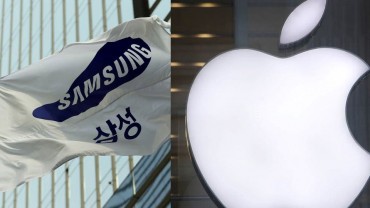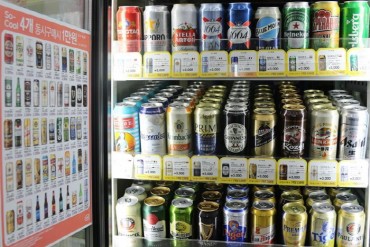
This file photo taken July 29, 2020, shows planes parked at Incheon International Airport, west of Seoul. (Yonhap)
SEOUL, June 27 (Korea Bizwire) — Once firmly on the path to recovery from the disruption brought on by the coronavirus pandemic, the South Korean airline industry is now facing a crisis of being trapped in ‘three highs,’ a term describing high inflation, high exchange rates and high interest rates.
The price of aircraft fuel stood at US$177.08 per barrel on June 17, up 128.9 percent from a year ago and up 20.8 percent from a month ago, according to the International Air Transport Association (IATA).
In the first quarter of this year, fuel costs for Korean Air Lines Co. and Asiana Airlines Inc., the nation’s two full-service carriers, stood at 663.3 billion won (US$513 million) and 291.9 billion won, respectively, with the share of fuel cost in their operational expenses estimated at 33 percent and 30 percent.
For every dollar increase in the per-barrel crude oil price, the fuel cost for Korean Air and Asiana increases by about 36.3 billion won and 12.8 billion won, respectively.
Airlines, in general, minimize the risk arising from the fluctuation of crude oil prices by using fuel hedging, a practice in which fuel is purchased in advance when crude oil prices are low, and forward contracts are signed for oil.
However, as the period of high oil prices prolongs, their response to the crisis is nearing its limits.
The high exchange rate is another burden for airline companies, which typically make fuel and aircraft payments in foreign currencies. The won-dollar exchange rate passed the 1,300 won mark last Thursday for the first time since mid-July 2009.
For Korean Air, which has about $4.1 billion in net foreign currency-denominated debts, the hike in the U.S. dollar exchange rate from 1,200 won to 1,300 won creates an additional book loss of 410 billion won.
Low-cost carriers (LCCs) that operate aircraft through leasing rather than purchasing are more affected by the weak Korean won compared to major airline companies.
High interest rates are also adding a financial burden to airline companies. A 1-percent increase in the average interest rate creates an additional interest rate expense of about 45 billion won for Korean Air and about 32.8 billion won for Asiana.
Ashley Song (ashley@koreabizwire.com)






